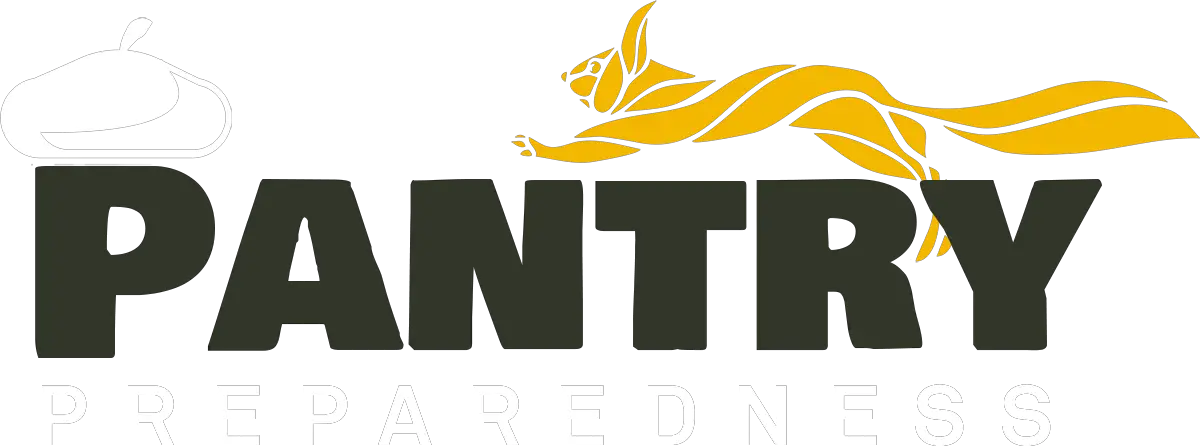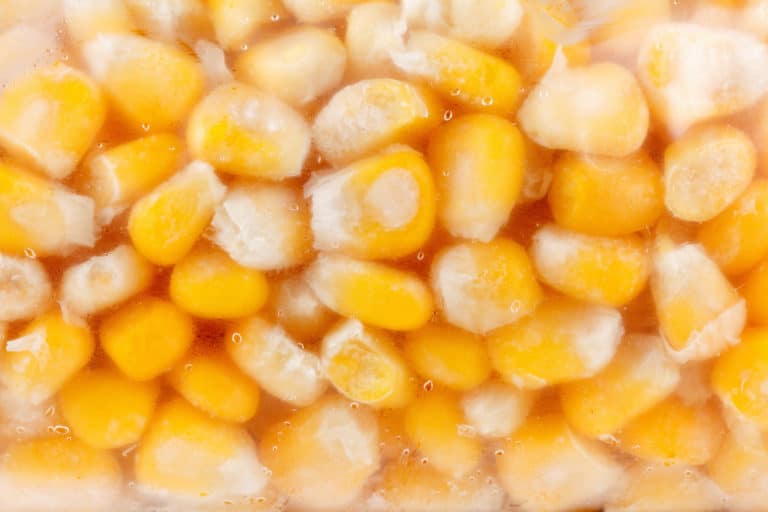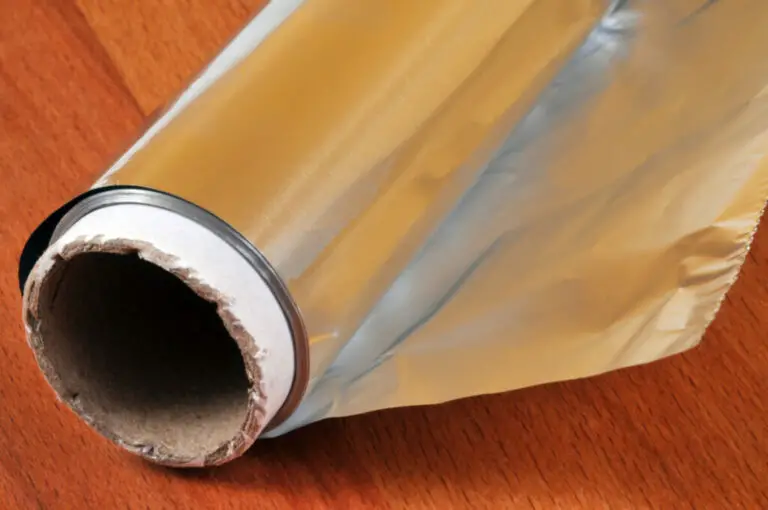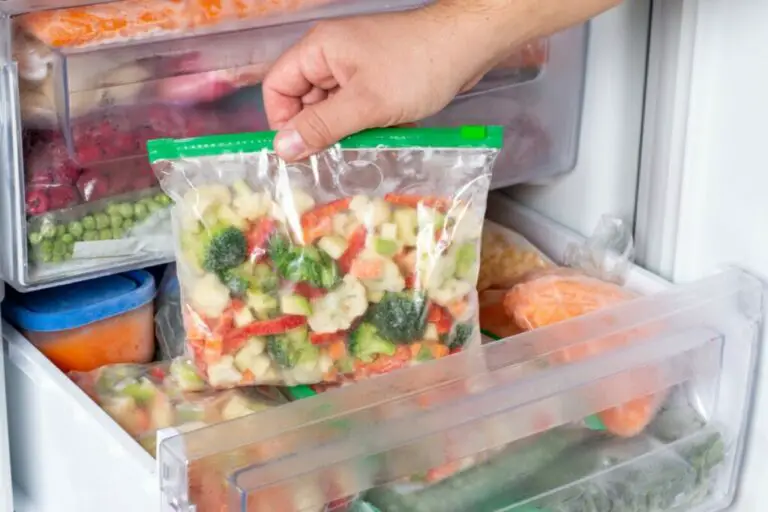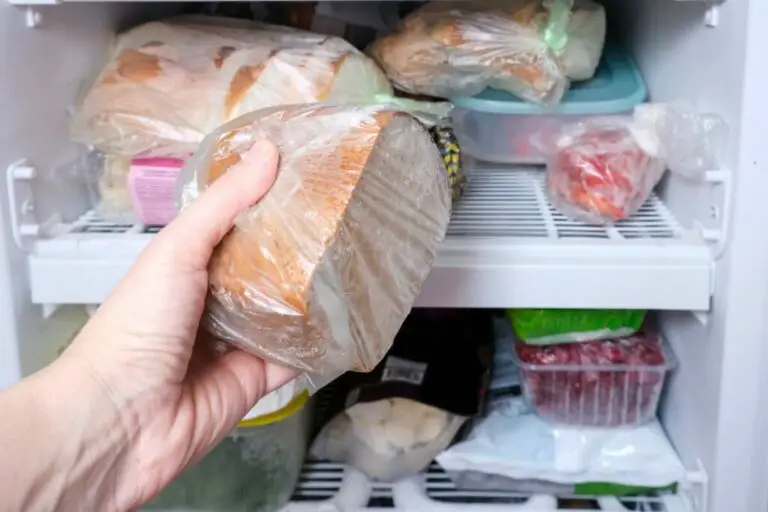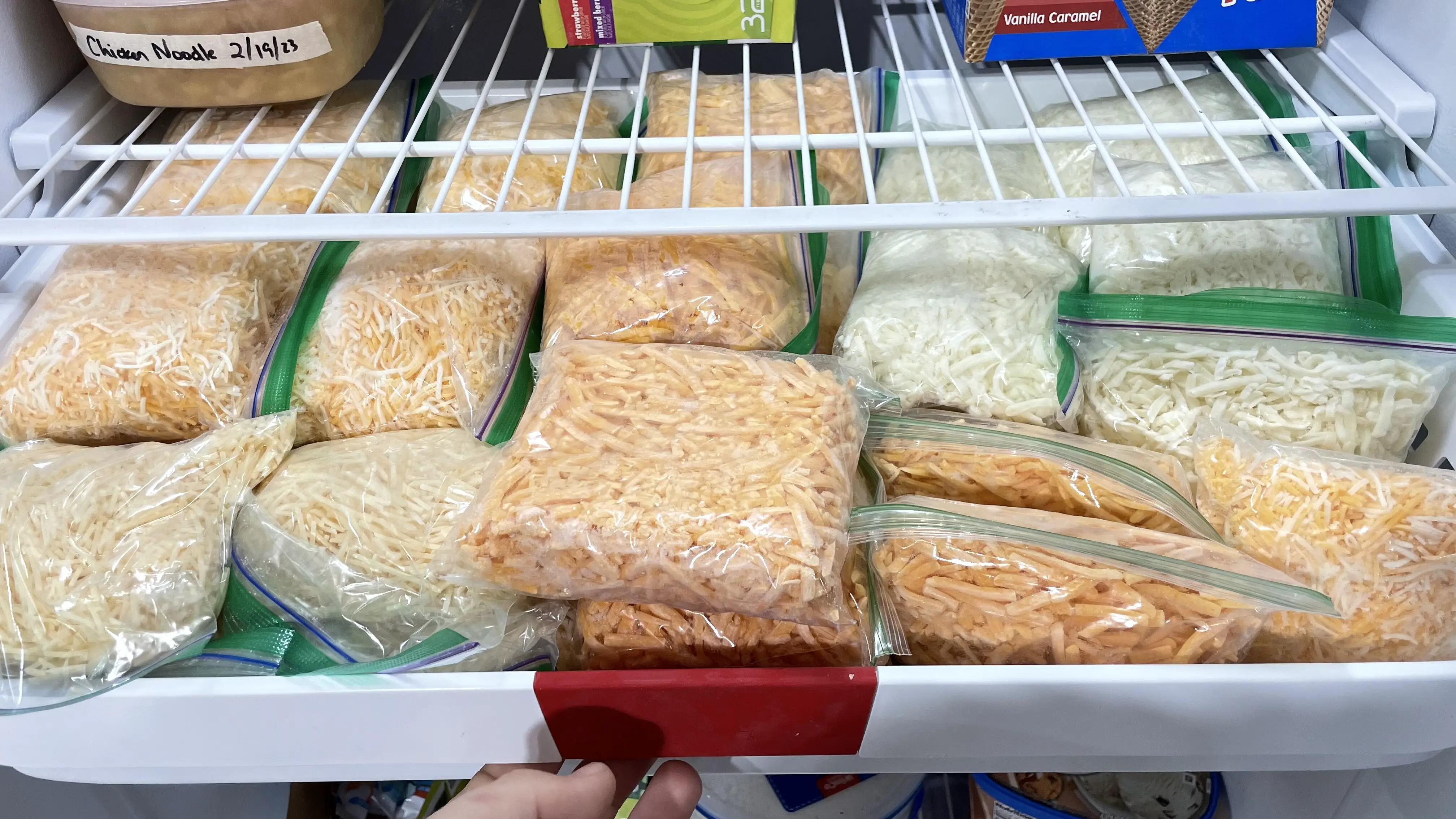
If you are looking to store your food in the freezer, knowing what materials are best to wrap your food storage in is essential. So, what are the best wrapping materials for frozen food storage?
Vacuum-sealed plastic is the ideal wrapping material for most frozen foods because it has a very low risk of freezer burn or bacteria exposure. Plastic containers with a tight seal also work for food that is being stored in the freezer for a short period of time.
When storing food in the freezer, it is important to know how to avoid freezer burn. Let’s go over some of the best wrapping materials for frozen food storage.
Vacuum Sealing for Freezing
Vacuum-sealing food is a great way to protect your food from freezer burn and keep it from drying out. You can vacuum-seal food into individual portions. I love doing this because it makes it so I can thaw out only as much as I will use at one time. Thawing and re-freezing multiple times ruins pretty much any food.
Vacuum sealing before freezing also preserves your food by preventing the growth of mold and bacteria because mold and bacteria can’t grow without oxygen.
You need to purchase special bags or rolls and a vacuum sealer to do this properly, but it is worth the extra effort if you want to preserve your food for a long time. I use a FoodSaver vacuum sealer like this one on Amazon and it’s worked really well for a few years already.
Your food will last longer if you vacuum seal it. Vacuum-sealed food lasts 3-5 times longer than food stored in Tupperware-style plastic containers. It can easily last for around 2-3 years if stored at the proper temperature.
Vacuum-sealing is also a great way to keep your food organized in the freezer. I also think vacuum-sealed food tastes better because the bags hold in the moisture, juices, and flavor of the food.
Skin Film
Skin film is similar to vacuum-seal packaging. It protects food from contamination while freezing. Skin film is made from a clear, crystallized polyethylene plastic film. This material makes it oven and microwave-safe. This type of plastic wrap is often used for seafood.
To use skin film, put your food on a tray or piece of paperboard. Then put a thin sheet of skin film on the food and seal it according to the product’s instructions.
Shrink Film
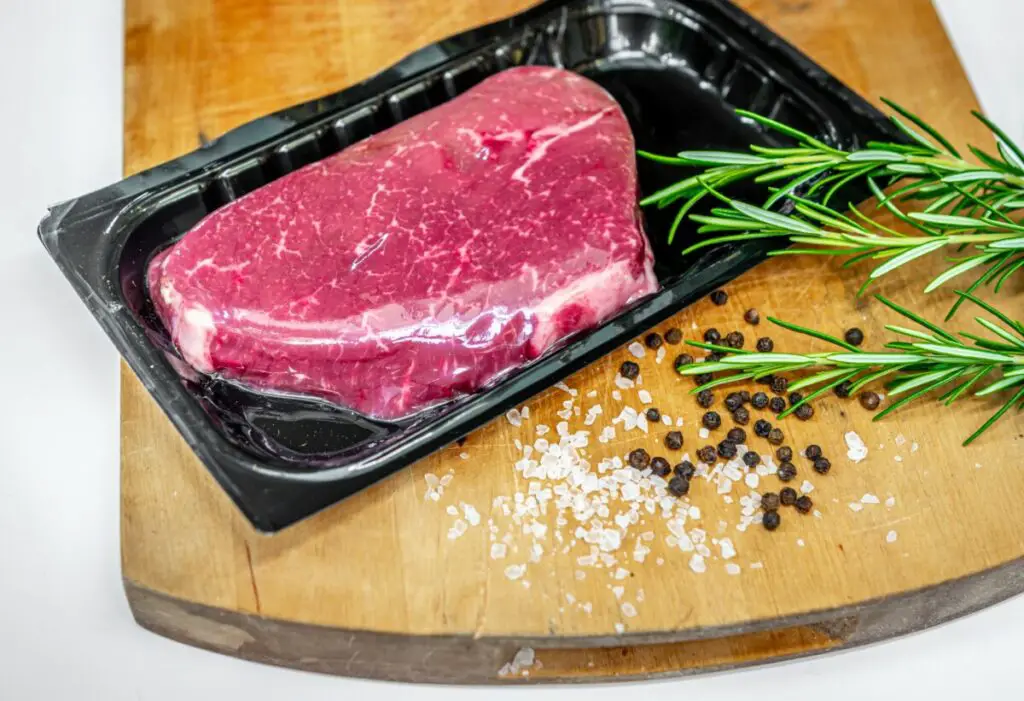
Shrink wrap or film is one of the more common types of frozen food packaging. It is a plastic film that is applied to products through the process of heat sealing. During this process, it is important to heat the film with a heat gun to make it shrink and wrap tightly around the food.
Shrink films are made with polyethylene, polyvinyl chloride, or polyolefin materials. Polyolefin is the best choice for food packaging because it is FDA-approved. It is also durable and affordable.
I don’t personally use skin film or shrink film for home food storage so I can’t really speak to how well it works or how easy it is to use.
High Barrier Thermoforming Film
Barrier film is a type of film that is perfect for food that you will put into the freezer long-term. It is often used to package meat and poultry, and many store-bought goods are packaged in barrier film. High-barrier films offer more protection than other types of film.
It is commonly used to be used as a gas barrier for food packaging. The role of the barrier film is to prevent certain elements such as UV/light, gas, water, oil, odor, and flavor from getting into the package and contaminating the food. You will want to use it to package foods that are particularly sensitive to exposure.
Some types of high-barrier films are better moisture barrier packaging, some are better oxygen barriers, and some are better at preserving the product’s flavor.
IQF Polyethylene
IQF polyethylene is a low-density polyethylene film that is specifically designed to prevent any punctures or tears. It seals quickly and comes in pouches and rolls of film.
IQF polyethylene can withstand extremely cold temperatures, which makes it ideal for storing frozen food.
Wax-Coated Cardboard
You might recognize this material as the take-home box you use for your leftovers at your favorite Asian restaurant. Wax-coated cardboard is lined with polyethylene to help prevent the cardboard from getting soggy. This material is designed to be not only refrigerated but also frozen.
If you see or feel a waxy residue when you scrape the box, there is a good chance that it is wax-coated cardboard. This material is often used to package juice, milk, soup, broth, and wine. Wax-coated cardboard is heat resistant and can be placed in the microwave if needed.
Wax-coated cardboard is used often because of its heat-resistant capabilities, strength, and diversity. You can also use it to store food in the freezer.
The downside of wax-coated cardboard is that it’s not recyclable and most likely will end up in a landfill. You should only freeze things in wax-coated cardboard for short periods of time because it isn’t airtight so your food will get freezer-burned relatively quickly.
Glass
Using glass to package frozen food isn’t extremely popular in America, but it’s most commonly used in Asian countries.
Using glass for frozen food is typically uncommon because glass is heavier than all of the other materials we have mentioned. But it can be used repeatedly, unlike a lot of the materials we’ve discussed.
Glass can be great for freezing or just simply storing food because it doesn’t absorb liquids and foods the way that plastic does. Glass also doesn’t develop any bad odors or bacteria. It also will not leak any potentially harmful chemicals into your food.
However, be careful when freezing liquids in glass because they expand. You will need to leave some space on top to ensure the glass does not break or crack as the liquid in your food expands. It’s also best to use glass containers that are designed for freezing. Most canning jars are not, but some are made specifically for things like freezer jam.
Be careful when taking glass containers out of the freezer, as they might be heavier than you expect, and you don’t want to drop a frozen glass container on your foot.
Aluminum
Aluminum is one of the more common things you can use to package food that you will store in the freezer. You can use aluminum foil that can be shaped to fit almost any item or aluminum pans that can also be used in the oven to store food in the freezer.
This is my favorite way to store ready-to-bake meals, like pasta and casserole. Often when we make lasagna or ziti pasta, it’s not much harder to make 2, or even 4, than it is to make just 1. So we make one to bake right away and put the rest of them in disposable aluminum pans and then freeze them.
One downside of using aluminum foil pans and foil is that they can’t be recycled unless they are clean. They usually have too much food and grease buildup and will end up in a landfill. Another downside is that since they’re not airtight, anything you store like this will get freezer burned after a while. So it’s not great for long-term food storage.
Flexible Bags

This type of food storage is typically used for packaging food in larger quantities. The most common flexible bags that are used when it comes to frozen food are made from food-grade plastics, foils, and many other food-safe materials. When using freezer bags like Ziploc, remove as much air as possible before sealing and freezing the food.
There are two different kinds of flexible bag shapes: pillow pouches and stand-up pouches. These two pouches are made specifically for the packaging of frozen vegetables, fruit, pasta, premade meals, and many other different types of frozen food. There are also some types of flexible bags that are completely clear and thin. They are typically used for packaging baked goods like bread, buns, and rolls.
Flexible plastic bags are great for storing frozen food because they are clear, cheap, easy to open and close, and they can be stored completely flat, which makes it easy to store a lot of food in your freezer.
We use Ziploc freezer bags for lots of things you might not expect, including soup. Lots of leftovers store well in freezer bags.
Lidding Films
Lidding film is typically used to create lids for different types of containers. It is usually used with plastic containers. These lidding films are both FDA-approved and food-grade. These films are typically left clear so that you can see the food and whether or not it is still safe to eat. Lidding film is typically used in large manufacturing and may be difficult to set up at home.
The downside of using lidding film to store food in the freezer is you will have to use it with a different type of container. It’s not a complete food storage container in and of itself.
Plastic Containers
Many foods can be stored and frozen in plastic containers. I use these plastic food storage containers and they’re great to use in the freezer because they are cheap and easy to stack. You can store almost any type of food in this type of container. We use them for soup, dinner leftovers, and even freezer jam.
However, these plastic containers easily crack when kept in the freezer for long periods of time or when they’re overfilled, which will cause your food to freezer burn. Luckily, because these containers are so cheap and easy to purchase, you can easily get new containers when your old ones crack.
Which Wrapping Material is Best for Meat?
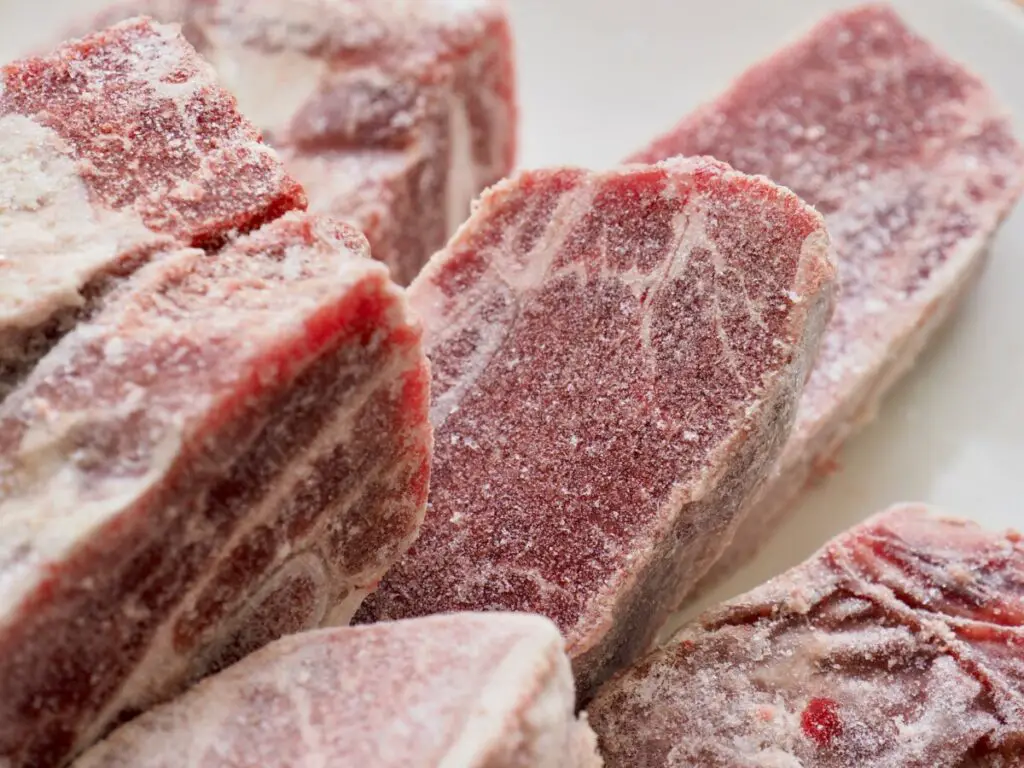
When wrapping and packaging any type of meat, your main goal is to block out any moisture or air. Many people will simply do this by layering the meat with a layer of plastic wrap and then using a layer of aluminum foil. Although this is a very simple way to wrap meat in materials you most likely already have, there is a better way to ensure that your meat stays fresh, even when it’s frozen.
It is recommended to wrap meat in butcher or freezer paper before freezing it. Freezer paper is a wax-coated paper specifically made for freezing meat. The waxy side of the paper should touch the meat. This wax layer prevents moisture from getting in or out.
For extra protection, you can wrap the whole package in an airtight layer of aluminum foil or plastic wrap after wrapping it in freezer paper. Make sure to label the outside layer with the packaging date and expiration date so you will know when to eat the food by.
I also often use my vacuum sealer for meat too for the same reasons, it does a great job of trapping in the moisture but keeping out oxygen.
Importance of Freezing Food Properly
It is incredibly important that you package food properly before freezing it so that you can prevent freezer burn and maintain the quality of the food. Meat typically comes in a bag when you purchase it from the store, but this type of wrap is permeable to air, which will make the quality of the meat diminish over time.
Freezer burn does not make food unsafe, but it will alter the taste and texture. On meat products, freezer burn usually causes the meat to appear grayish-brown and leathery in spots. Freezer burn is caused by air coming into contact with the surface of the food. You can simply cut freezer-burned portions of meat off of the main portion before or after cooking the food.
It’s always a good idea to freeze food as fast as possible to maintain its quality. When you freeze the food quickly, you prevent ice crystals from forming. Never stack packages of meat to be frozen. Instead, spread them out to speed up the freezing process.
There are three ways to safely thaw food. The best way to thaw frozen food is in the fridge or in a bowl of cold water. When you thaw frozen food in the fridge, the food stays at a safe temperature but slowly becomes soft. This prevents harmful bacteria from forming.
To thaw food in cold water…
- Fill a bowl with cold water.
- Put the food you are thawing in the cold water.
- Make sure that the container the food is in is completely sealed and that the water completely covers the food that is being thawed.
- Replace the water when it gets to room temperature.
You can also use the microwave to thaw food. If you use the microwave to thaw frozen food, make sure to cook the food immediately afterward, and don’t freeze it again.
Overall, there are many things that are great for wrapping food that you will store in the freezer. Which product you use will vary depending on your budget and personal preferences. Personally, I find that it is easiest to store frozen food in plastic containers or plastic bags. They’re cheap and easily available in most stores, which means they’re easy to buy.
When I’m storing food that I plan to keep frozen for a long time, vacuum-seal bags are my go-to. And overall, they’re the best for storing most frozen foods in.
